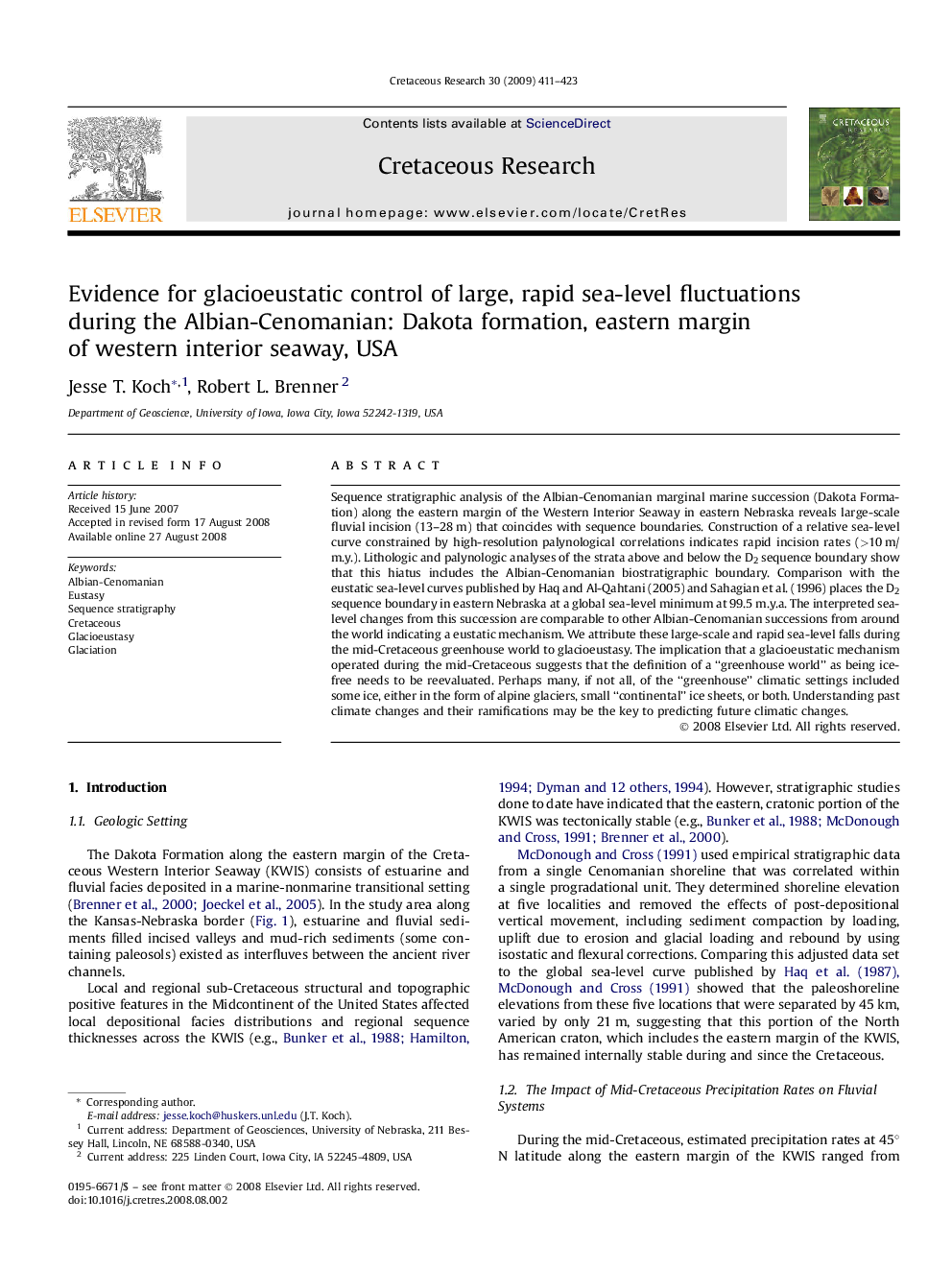| کد مقاله | کد نشریه | سال انتشار | مقاله انگلیسی | نسخه تمام متن |
|---|---|---|---|---|
| 4747732 | 1359931 | 2009 | 13 صفحه PDF | دانلود رایگان |

Sequence stratigraphic analysis of the Albian-Cenomanian marginal marine succession (Dakota Formation) along the eastern margin of the Western Interior Seaway in eastern Nebraska reveals large-scale fluvial incision (13–28 m) that coincides with sequence boundaries. Construction of a relative sea-level curve constrained by high-resolution palynological correlations indicates rapid incision rates (>10 m/m.y.). Lithologic and palynologic analyses of the strata above and below the D2 sequence boundary show that this hiatus includes the Albian-Cenomanian biostratigraphic boundary. Comparison with the eustatic sea-level curves published by Haq and Al-Qahtani (2005) and Sahagian et al. (1996) places the D2 sequence boundary in eastern Nebraska at a global sea-level minimum at 99.5 m.y.a. The interpreted sea-level changes from this succession are comparable to other Albian-Cenomanian successions from around the world indicating a eustatic mechanism. We attribute these large-scale and rapid sea-level falls during the mid-Cretaceous greenhouse world to glacioeustasy. The implication that a glacioeustatic mechanism operated during the mid-Cretaceous suggests that the definition of a “greenhouse world” as being ice-free needs to be reevaluated. Perhaps many, if not all, of the “greenhouse” climatic settings included some ice, either in the form of alpine glaciers, small “continental” ice sheets, or both. Understanding past climate changes and their ramifications may be the key to predicting future climatic changes.
Journal: Cretaceous Research - Volume 30, Issue 2, April 2009, Pages 411–423